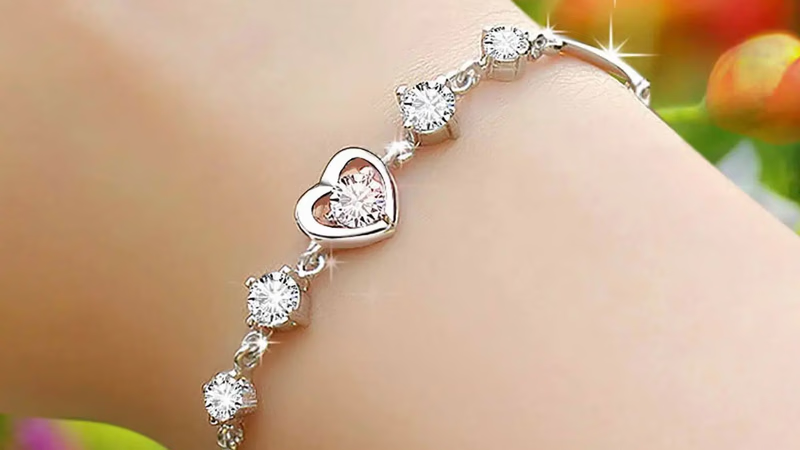
Silver"s versatility shines in electronics and medical applications. "
Silver's aesthetic appeal, durability, and malleability make it a popular choice for crafting jewelry, silverware, and decorative items. Silver is an excellent conductor of electricity, making it essential in the production of electrical contacts, switches, connectors, and circuit boards. It is used in various electronic devices, including smartphones, computers, televisions, and automotive electronics. In traditional photography, silver is used in photographic films and papers. When exposed to light, silver halide crystals on the film or paper capture and store the image. Although digital photography has become prevalent, silver is still used in some specialized applications and printing processes.
Silver catalysts are employed in various chemical reactions, such as the production of formaldehyde, ethylene oxide, and other chemicals. They play a crucial role in the manufacture of plastics, pharmaceuticals, and fine chemicals. It is used professionally in solar panels, water purifiers, jewelry, decoration, silverware, electrical fittings, and conductors, mirrors, window coverings, and chemical reactions. And a combination of photographic and X-ray films is used. Dilute solutions of silver nitrate and other compounds of this metal are used as disinfectants and microbiocides and are added to bandages and dressings, catheters, and other medical instruments.
The interesting thing about silver is that today, the metal is used for solder and solder alloys, batteries, dentistry, LED chips, nuclear reactors, photovoltaic (or solar) energy, RFID chips to track packages or shipments worldwide, Semiconductors, touch screens, wood preservatives, and many other industrial applications. The largest consumers of silver for industrial applications in the last decade have been the United States, Canada, China, India, Japan, South Korea, Germany, and Russia. During this period, the demand for this metal from the old industries decreased and it is mostly used in new technologies.
Very high electrical and thermal conductivity is common for Group 11 elements, but silver has a higher electrical conductivity than all metals and even more than copper but is not widely used due to its higher cost. An exception in frequency engineering. It is radio, especially at VHF and higher frequencies that silver plating causes electrical conductivity because these currents tend to flow more than the surface of the conductor than its internal parts. Pure silver has the highest conductivity and has heat compared to other metals, although the conductivity of carbon (in diamond allotropes) and helium is extremely high. It also has the lowest contact resistance to any other metal and easily forms alloys with copper, gold as well as zinc.
Note: The metal does not react with air even at red temperatures, so it was considered by alchemists to be a noble metal with gold. The reactivity of this metal is something between copper, when heated in air to red heat, forms copper oxide (I) and gold. Like copper, this metal reacts with sulfur and its compounds. In the presence of sulfur, silver stains in the air and forms black silver sulfide (copper instead forms green sulfate, while gold does not react). Unlike copper, silver does not react with halogens except fluorine gas, with which it forms difluoride. The metal is not attacked by non-oxidizing acids but dissolves easily in concentrated sulfuric acid as well as dilute or concentrated nitric acid. In the presence of air and especially in the presence of hydrogen peroxide, the metal dissolves easily in aqueous cyanide solutions.
Silver has the highest reflectivity of any metal, making it ideal for mirrors and reflective coatings. Thin layers of silver are applied to glass or other substrates to create highly reflective surfaces used in mirrors, telescopes, microscopes, and optical coatings. Silver possesses antimicrobial properties, making it valuable in medical applications. It is used in wound dressings, catheters, surgical instruments, and various medical devices to prevent infections and promote healing. Silver is utilized in certain types of batteries, such as button cells, due to its high electrical conductivity. It enhances the battery's performance and reliability.
Silver is used in the production of photovoltaic cells, which convert sunlight into electricity in solar panels. It serves as a conductor, facilitating efficient energy conversion. The antimicrobial properties of silver are utilized in water treatment and purification systems. Silver ions or silver-coated materials are employed to kill bacteria and inhibit microbial growth in water filters and disinfection systems. Silver-based alloys are commonly used in brazing and soldering applications due to their low melting points and excellent bonding properties. These alloys create strong and reliable joints in the assembly of electronic components, plumbing systems, and metalwork.
-
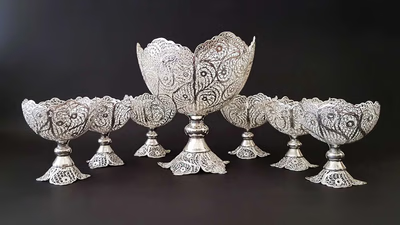
The silver market in West Asia is characterized by a rich cultural heritage and a growing demand for both jewelry and investment products. Countries like Saudi Arabia, UAE, and Iran are key players, with a strong market for traditional and contemporary silver jewelry. The region is also witnessing an increase in the demand for silver bullion, coins, and investment vehicles such as ETFs. Industrial applications of silver are expanding due to rapid growth in sectors like construction and electronics, where silver"s unique properties make it essential. Despite its dual role as an investment commodity and consumer good, less than one-third of silver demand comes from jewelry and investment products. The price of silver is influenced by diverse factors beyond mere consumer trends, including industrial demand which plays a significant role in price determination. Additionally, the luxury market in the Middle East thrives on high-end silver items, appealing to affluent consumers. Cultural significance also drives the use of silver in religious artifacts and traditional ceremonies.
Overall, the dynamics of the West Asian silver market are shaped by local consumption patterns influenced by global price fluctuations and economic conditions. "
-
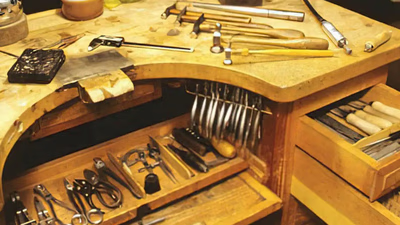
Silver metal has diverse applications across various industries, primarily due to its unique properties. In jewelry making, silver"s antibacterial characteristics make it ideal for silverware. In the medical field, silver is utilized in wound dressings and as an antibiotic coating for medical devices, effectively combating infections through bioactive silver ions. The electronics sector benefits from silver"s high electrical conductivity, using it in conductors and electrodes for semiconductor devices and circuits. Additionally, silver solder is essential for joining metals like cobalt and copper, enhancing efficiency and corrosion resistance. Silver"s low reactivity and high thermal conductivity make it valuable in chemical equipment manufacturing, often used in high-temperature applications. As a catalyst, powdered silver facilitates oxidation reactions, converting organic matter into carbon dioxide and water. While generally less toxic than other heavy metals, certain silver compounds can pose health risks if ingested or improperly handled.
Overall, the versatility of silver across these sectors highlights its significance in modern industry. "
-

Silver is a versatile metal with numerous applications across various industries. Its aesthetic appeal and durability make it a popular choice for jewelry and decorative items. In electronics, silver"s excellent conductivity is crucial for manufacturing components like circuit boards and connectors, as well as in devices such as smartphones and televisions. The metal also plays a significant role in traditional photography, chemical reactions, and medical applications due to its antimicrobial properties. Silver is used in solar panels, batteries, and water purification systems, showcasing its importance in modern technology. Despite its higher cost compared to other metals like copper, silver"s unique properties make it indispensable in many sectors. The demand for silver has shifted towards new technologies over the past decade, with major consumers including the United States, China, and India. Its high reflectivity makes it ideal for mirrors and optical coatings, while its ability to form alloys enhances its utility in various industrial applications.
-
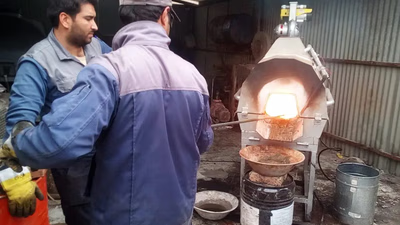
Silver prices in West Asia are shaped by various global and regional factors. Key influences include economic conditions, geopolitical events, and investor sentiment. The region"s industrial demand, particularly from sectors like construction and electronics, significantly impacts silver prices. Supply dynamics, driven by mining production and recycling rates, also play a crucial role. Currency exchange rates between local currencies and major currencies can affect purchasing power in the silver market. Retail investors have shown increasing interest in silver as a premier asset, with many expecting it to outperform gold. The price of silver has seen a substantial rise since its low during the pandemic, driven by low interest rates and inflationary pressures. Technical analysis is often employed alongside fundamental analysis to forecast price movements based on historical patterns and market indicators.
Market sentiment can shift due to news events or economic data releases, influencing buying or selling pressure on silver prices. Additionally, cultural factors in West Asia contribute to consumer demand for silver jewelry and luxury items, further affecting price trends. "
-
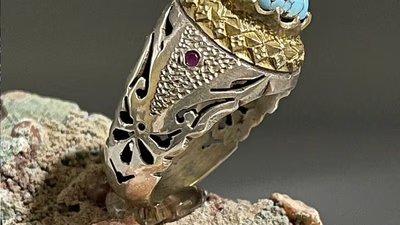
The silver futures market in Western Asia serves as a vital platform for price discovery, enabling participants to assess future silver values essential for hedging against price risks. Producers, manufacturers, and jewelers utilize this market to manage potential fluctuations through futures contracts. Additionally, traders can engage in speculative activities by taking long or short positions based on market analysis. The region"s economic growth enhances the demand for silver, allowing investors to capitalize on local trends. The market also offers Sharia-compliant contracts, appealing to those seeking ethical investment opportunities. Integration with global commodities exchanges provides access to broader trading opportunities and improves liquidity. Silver"s unique characteristics as both a safe commodity and an industrial product differentiate it from gold, with industrial demand playing a significant role in price determination. Futures contracts enable leveraged trading, attracting those looking to profit from minor price movements while diversifying portfolios beyond traditional assets like stocks and bonds.
-
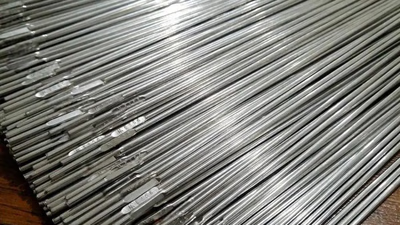
Silver paste production in West Asia is emerging, with specialized facilities primarily located in the UAE, Saudi Arabia, and Iran. The process requires high-quality raw materials such as silver powder, binders, and additives. Quality control is critical, involving rigorous testing methods to ensure the paste meets industry standards. An Iranian company has pioneered silver paste production in the region, achieving a capacity of 6 tons per year and preventing significant foreign currency outflow. Their product has been successfully tested in automotive applications, showcasing its potential for various industries including electronics and semiconductors. Continuous research and development efforts are focused on improving formulations and application techniques to enhance performance. The production process includes careful formulation of silver paste to achieve desired properties like electrical conductivity and adhesion. This involves mixing silver particles with binders and solvents, followed by milling to ensure uniform particle size distribution. As the market for silver paste grows in West Asia, opportunities for B2B marketplaces and supply chain solutions are expanding.
-
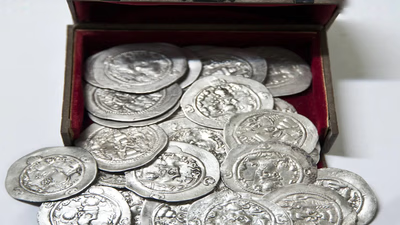
The price of silver is influenced by various supply and demand factors. Limited production and reserves, with historical mining totaling 1. 5 million tons and current reserves at 29,665 tons, play a crucial role. Key supply factors include mining methods, labor strikes, and the output from major producers like Mexico, Peru, and China. Demand for silver can be categorized into four areas: as a safe investment commodity, in jewelry and decorative items, as an industrial good, and its correlation with gold prices. Economic indicators such as Federal Reserve monetary policy significantly impact silver prices; for instance, rising interest rates typically lead to lower prices. Conversely, high inflation rates increase demand for silver as a hedge against currency devaluation. Additionally, fluctuations in the dollar"s value inversely affect silver prices.
Economic instability also drives investors towards safe commodities like silver. The jewelry sector accounts for about 25% of annual demand, particularly during festive seasons in countries like India. Industrial applications consume approximately 50% of silver supply, linking its price to economic growth in developed nations. "
-

Silver is a versatile metal with exceptional properties that make it valuable across various industries. Its unparalleled electrical and thermal conductivity positions it as a crucial component in the electronics sector, where it is utilized in electrical contacts, switches, and circuit boards. The metal"s high reflectivity is leveraged in optics, mirrors, and solar panels. Additionally, silver"s strong antimicrobial characteristics are beneficial in medical applications, including wound dressings and antibacterial coatings, enhancing hygiene and reducing infection risks. Silver-based alloys are favored for brazing and soldering due to their low melting points and robust bonding capabilities. In water treatment systems, silver ions effectively eliminate bacteria and impurities. Although more abundant than gold in the market, silver remains a precious metal with historical significance across cultures. Its malleability and aesthetic appeal make it popular for jewelry and luxury items. Furthermore, silver plays a role in chemical production as a catalyst and is used in specialized batteries and photovoltaic cells for solar energy conversion.








